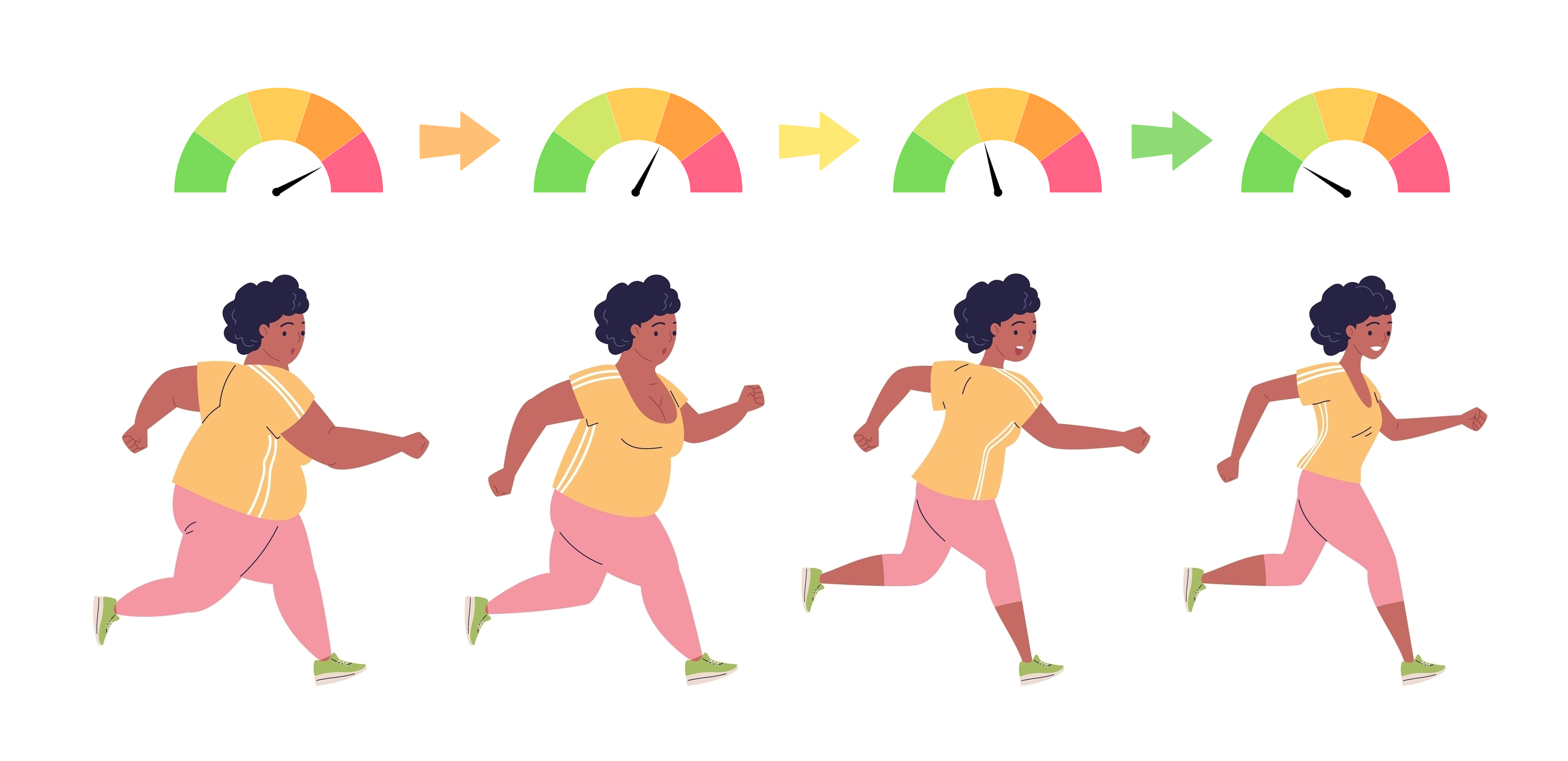According to the 2013 overweight and obesity management guidelines by the American Heart Association, the American College of Cardiology, and The Obesity Society, a dose-dependent relationship was found between the amount of weight loss and an improvement in lipid profile in overweight or obese adults, regardless of cardiovascular disease (CVD) risk status. Depending on the degree of weight loss, improvements can be seen in low-density lipoprotein cholesterol (LDL-C), triglycerides, and high-density lipoprotein cholesterol (HDL-C) levels.1 With a weight loss of less than 3 kg, modest and variable improvements were seen in all three lipid measures. With a weight loss of 3 kg, at least 15 mg/dL weighted mean reduction was seen in triglyceride levels. With weight loss between 5 to 8 kg, approximately 5 mg/dL reductions in LDL-C levels and 2 to 3 mg/dL elevations in HDL-C levels were achieved.
The 2001 Adult Treatment Panel III on high blood cholesterol by the National Cholesterol Education Program recommends weight loss and increased physical activity as first-line therapies for all lipid and non-lipid risk factors associated with metabolic syndrome.2 Therapeutic lifestyle changes that can lower LDL-C include weight loss, increased physical activity, and dietary modifications (such as reduced intake of saturated fats). Weight reduction therapy is recommended for overweight or obese adults in order to enhance reductions in LDL-C levels.
A randomized controlled trial studied the effect of diet and exercise in 180 postmenopausal women (ages 45 – 64) and 197 men (ages 30 – 64) with moderately elevated LDL-C (125-210 mg/dL for women and 125-190 md/dL for men) and low HDL-C levels (≤59 mg/dL in women and ≤44 mg/dL in men).3 The participants were randomized to aerobic exercise, the National Cholesterol Education Program (NCEP) Step 2 diet, diet-plus-exercise, or to a control group. After one year, both men and women experienced significant weight losses in the diet (-2.8 ± 3.5 kg and -2.7 ± 3.5 kg, respectively) and diet-plus-exercise groups (-4.2 ± 4.2 and -3.1 ± 3.7) when compared to the control (+0.5 ± 2.7 and +0.8 ± 4.2) and exercise groups (-0.6 ± 3.1 and -0.4 ± 2.5). Although the degree of weight change was not significantly different between the diet group and the diet-plus-exercise group, only the diet-plus-exercise group found significant reductions in the LDL-C (-2.5 ± 16.6 mg/dL vs. -14.5 ± 22.2 mg/dL, p<0.05) and total cholesterol levels (-1.0 ± 19.5 mg/dL vs. -17.5 ± 21.4 mg/dL, p<0.01). Participants assigned to either the exercise or the diet group showed no statistically significant reductions in LDL or total cholesterol levels compared to those assigned to the control group. This finding highlights the combined effect of increased exercise and lowered dietary fat in improving lipid profiles.
A population-based cross-sectional survey using the World Health Organization’s Multinational Monitoring of Trends and Determinants in Cardiovascular Disease (MONICA) Project analyzed 27 populations with 48,283 subjects aged 25 – 64 years.4 The study found that hypercholesterolemia defined as 6.5 mmol/L (251 mg/dL) was positively associated with body mass index (BMI) among young adults, but less so in older adults. In males between 25 and 44 years of age and females between 25 and 49 years of age, the prevalence of hypercholesterolemia increased continuously as BMI increased. The odds ratio, for example, of having hypercholesterolemia for an overweight man between age 25 and 29 was 2.3 (95% confidence interval [CI] [1.80 – 3.02]), and for an obese man of the same age was 3.4 (95% CI [2.26 – 5.16]) compared to a man of normal weight. Compared to older men of normal weight, the risk of high cholesterol among overweight men 60 to 64 was 1.3 (95% CI [1.07 – 1.55]) and for obese men of the same age was 1.2 (95% CI [0.93 – 1.55]). Multiple logistic regression analyses found a negative statistically significant effect modification regarding age and BMI on the risk of hypocholesteremia (p<0.001). Based on these data, high cholesterol seems to be increasingly related to advancing age and less related to BMI for older men and women. Finding the strongest effect of obesity on the risk of hypercholesterolemia in young adults aged 25 – 39 years, the study recommended that future public health measures focus on preventing obesity in young adults.
References
- Jensen MD, Ryan DH, Apovian CM, et al. 2013 AHA/ACC/TOS guideline for the management of overweight and obesity in adults: a report of the American College of Cardiology/American Heart Association Task Force on Practice Guidelines and The Obesity Society. 2014;129(25 Suppl 2):S102-138.
- Executive summary of the third report of the National Cholesterol Education Program (NCEP) expert panel on detection, evaluation, and treatment of high blood cholesterol in adults (Adult Treatment Panel III). JAMA. 2001;285(19):2486-2497.
- Stefanick ML, Mackey S, Sheehan M, Ellsworth N, Haskell WL, Wood PD. Effects of diet and exercise in men and postmenopausal women with low levels of HDL cholesterol and high levels of LDL cholesterol. N Engl J Med. 1998;339(1):12-20.
- Gostynski M, Gutzwiller F, Kuulasmaa K, et al. Analysis of the relationship between total cholesterol, age, body mass index among males and females in the WHO MONICA Project. Int J Obes Relat Metab Disord. 2004;28(8):1082-1090.



